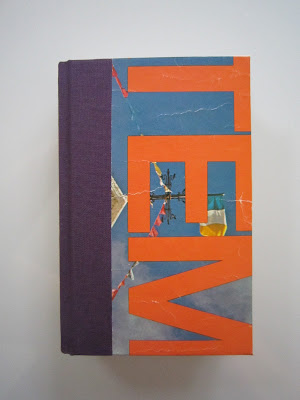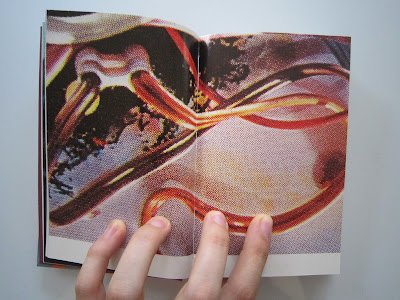

Back in offset printing class (these entries are just a post-graduation clearing house, aren't they?) I had some space left on the side of a print, so I thought I might as well make the most of it.
I had been wanting to make some business cards for myself. Predictably, the thought of just making regular business cards never occurred to me. Instead, I got excited about the possibilities of matchbooks.


I liked the thought of matchbooks with real matches in them. Because I didn't have the capacity to offset print that sandpaper strip that helps you light the paper matches in regular matchbooks, I had to use strike anywhere matches. For this version, I created a design with a stove on the front and a campfire on the back (two ways you can use the contents!) and 'STRIKE ANYWHERE' printed on the spine.
The reason I was able to fit these two pattens on the scrap edge of a larger print is because I made them very narrow (and, by virtue of the mechanics of matchbooks, the unfolded print is also very long). They are narrower than regular matchbooks, being 1" wide as opposed to the more standard 1.5".
The second pattern pushes the boundaries of matchbooks even further. I thought long and hard, trying to come up with another small, thin, disposable object that would be useful and pleasant to dispense in small portable batches. Toothpicks!


This toothpickbook unfolds to show a stretched out, weird face. The upper lip tucks into a reproduction of itself. The toothpicks are lightly glued to each other and then stapled inside, and easy enough to pull out one at a time (like the matches in the previous design).


I know they're decadent for business cards, but I'm also immensely pleased with them as mini art objects. The informative part of the card is stamped on the inside of the front flap. This stamp is one of those design-it-yourself types that come with lots of little rubber letters and symbols which you can then arrange to your liking. They're easy to buy at Staples or Office Depot, and not too expensive.










































